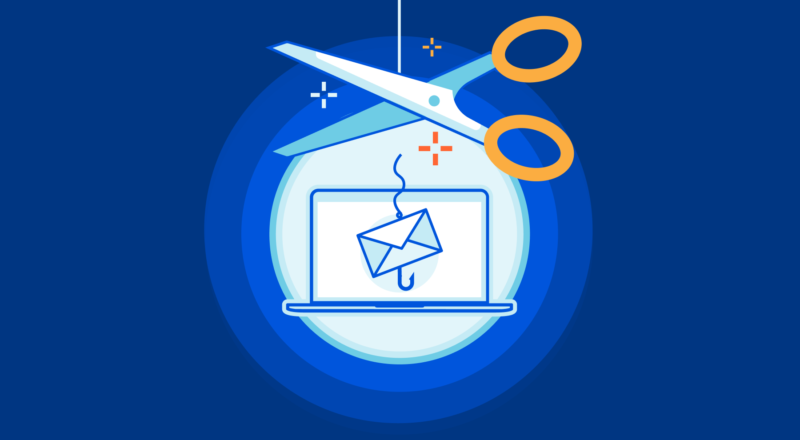Email Spoofing is a form of cyber-attack. It is performed by a hacker to manipulate the user to acquire personal details, spread malware through links or attachments, bypass network access controls, and redistribute traffic to conduct a denial-of-service attack. Email spoofing is a common cybersecurity threat on businesses that mitigate by implementing email authentication protocols such as SPF, DKIM, and DMARC. Email Spoofing includes malware, which gets installed automatically on the device if the user clicks on the link.
However, to stop email spoofing, one should follow the following steps:
The Top 8 ways to stop Email Spoofing are as follow:
1. Don’t use those email accounts related to bank, private or personal information:
Email-ID is an essential means of transforming information by contacting others. Keeping it public gives hackers a chance to access and hack our system to fetch our personal and bank-related information, primarily when using weak passwords. Our mobile has all the private information and ids. Most of us get trapped by hackers through emails linked with our mobile numbers linked with our bank accounts.
2. We should always be alert while opening mail:
We should not open every mail we receive; we should first read the sender’s email id or contact address. Sometimes, despite being marked spam by various users, drops in the inbox, and we open that mail, we should be cautious before clicking on any link. We should mark spam, those emails which are suspicious. We have to keep our personal information safe, and alertness always comes with good news as vigilance helps us avoid hackers, which ultimately keeps our emails away from being spoofed.
3. We should not open Spam emails:
As mentioned above, we should mark spam suspicious mails; it means those emails are not safe. Spam mails are marked spam by various mail users to safeguard users’ interests. So, we should never open those mail dropped in our spam mailbox. Spam emails vanish in 30 days, so we should not open spam emails, and there will be no tension of deleting, as they will be deleted automatically.
4. Always have anti-virus and anti-spamming tools:
Antivirus and anti-spamming tools protect our system and emails from malware. We should always take proper precautions in all aspects of our lives, and to be protected from malware and hackers, we should have appropriate tools in our system.
5. Always confirm the authenticity of users:
We should always verify the authenticity of users by demonstrating to the users directly by asking them face to face or on calls. Any advertisements should not trap us. Some links on our emails that open websites, some advertisements keep moving, some become big or small to attract the users with some great offers or rewards, and our system gets hacked with one click. So, we should only open authenticated emails users’ mail.
6. Use of signatures:
We use digital signatures like in income tax, ROC. Digital certificates keep information safe. Digital signatures can’t be copied like offline signatures. Digital signatures help send genuine emails to users.
7. We should spread awareness:
We should spread awareness among our relatives, friends, and people in the workplace. We should always take the initiative to spread awareness even in schools and colleges to make our youth pre-ready to deal with such spoofing. With the growth in technology, spoofing is growing. Email spoofing is spreading very rapidly. To keep the users protected from spoofing, we should train them and spread awareness.
8. Always put password and use minute information on emails:
In Emails, we should put only a few information that is not very private. We should always make our documents password protected before sending the documents. Passwords saved files to keep the emails protected and safe from hackers.
In Brief, the conclusion of the above 8 points:
To stop email spoofing, we should use password-protected documents which include confidential information. We should not open any links on websites. Spoofing and phishing are two common email scams that can be stopped by using email authentication protocols. Always check before opening any link or email. Always spread awareness to keep the world free from hackers. We should never use our emails for public work or any public sites related to our banks or personal ids.
Keeping it public gives a chance to hackers to easily access and hack our system to fetch our personal and bank-related information, primarily when we use weak passwords. Most of us get trapped by the easy access of hackers through our emails. We should mark spam suspicious mails; it means those emails are not safe. So, we should never open those mail dropped in our spam mailbox.
Always be alert, as alertness is equal to safety. However, not all people have had a proper computer education, which is why they fail to understand the working of several devices, such as routers. Therefore you should know about 192.168.0.30, which many people use over the internet. We have to keep our personal information safe, and watching always comes with good news as attention helps us avoid hackers, which ultimately keeps our emails away from being spoofed. We should use digital signatures in our mail, and it will provide confidence and trust in emails sent. Digital certificates keep the information safe. Digital signatures can’t be copied like offline signatures. Digital signatures help send genuine emails to users to keep and maintain confidence and dignity.
